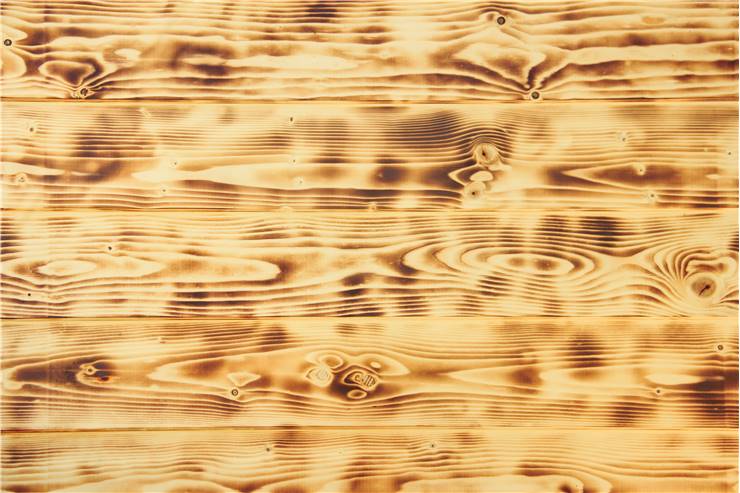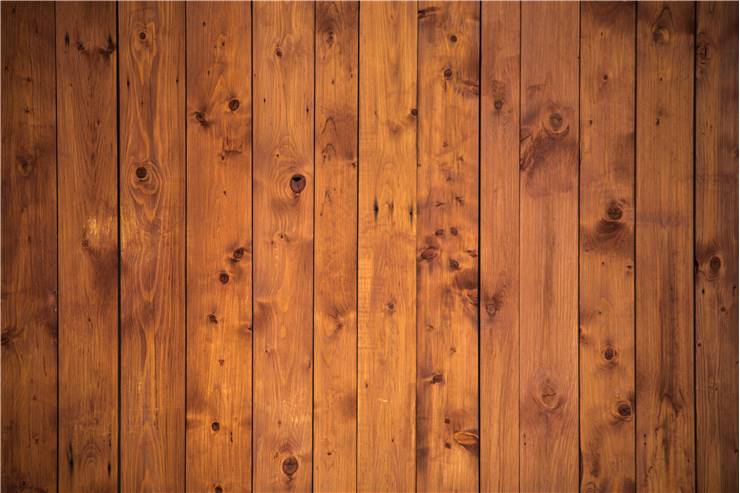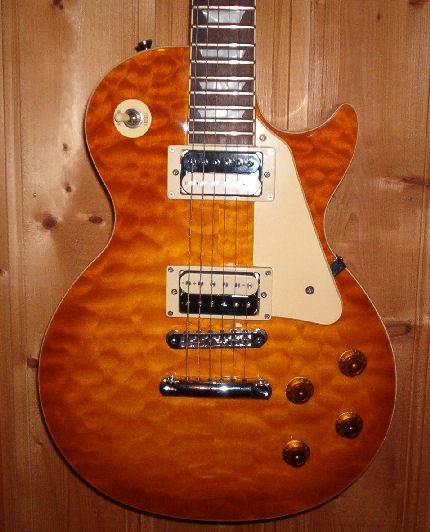Curly Maple - Characteristics, Types and Uses
Curly Maple is not a species of wood, it is one of the most famous grain variations of the maple heartwood that is today prized as one of the best wood types for the creation of musical instruments (most notably guitars, violins and other string instruments).
The grain of maple achieves this effect because the fiber cells that grow from the depths of its root to the tops of its canopy twist and turn as it grows, creating a wave-like effect that can be exaggerated in the finished lumber if it is cut in a certain way. The most common way of achieving this stunning grain pattern is by processing maple lumber with the quartersawn tool. Simply cutting a maple using flat-sawn will create a much-subdued version of a curly maple grain design and often erase all presence of it.
The 3D-like effect of curly maple is known as “figure”, representing a distortion perpendicular to the grain’s direction.
The curly maple wood is commercially harvested from the maple trees from the diverse Sapindaceae family that consists of around 128 individual species. Most of those species are natively originating from Asia, but dozens of them have also spread their roots across Europe, North America, and northern Africa. Only one species of maple ( Acer pseudoplatanus) can be found in the southern hemisphere. The most common species of this tree found across almost entire of Europe is Acer pseudoplatanus.
The vast majority of maple species types are deciduous trees, while a minority are shrubs, and only a few can live evergreen around the Mediterranean and southern Asia. Around the world, the maple tree and its leaves have managed to become famous symbols. Most notably, the Canadian flag features a Maple leaf, which in this case signifies endurance and strength.
The height of the use of curly maple for furniture peaked in 18th-century colonial America. Tiger maple variation also has a strong history in the world of violin makers. They used this wood type so extensively that maple got another name because of its- fiddle maple.
What is Curly Maple
Characteristics
The defining characteristic of curly maple grain is the fascinating design of its grain pattern that manages to create an interesting illusion of a three-dimensional pattern in which it appears that the grain is curling along the length of the entire board. The exact reason for the irregular growth of fiber cells inside maple trees’ heartwood is not currently known to scientists.
Like many other things in nature, there is not only a single type of curly maple design. Different-looking stripes can be achieved not only with different wood cutting methods but also because of the internal characteristics of the wood itself. The differences in the curly maple design grades are one of the defining reasons for the existence of different price points of curly maple wood. The subdued effect can be purchased cheaply, but visually striking designs can reach the price of some of the most exotic wood types on the modern market. The markers that define the cost of curly maple are the frequency of the curls (most prized ones are closely-spaced curvy designs), color (lightness and uniformity, bright and even designs are most popular), and intensity between three-dimensional objects and the surrounding wood. However, most curly maple wood designs are still not reaching the price of some other types of maple wood. For example, soft maple wood cut with flatsawn and producing a perfect “quilted maple” design is prized almost above all available types of curly maple.
In addition to the name curly maple, this type of wood is known as rapid grain maple, flame maple, ripple maple, tiger stripe, fiddleback, and others.
Types of Maple Trees
Maple trees can be separated by species:
- Bigleaf Maple (Acer macrophyllum)
- Black Maple (Acer nigrum)
- Box Elder (Acer negundo)
- Field Maple (Acer campestre)
- Hard Maple (Acer saccharum)
- Red Maple (Acer rubrum)
- Silver Maple (Acer saccharinum)
- Striped Maple (Acer pensylvanicum)
- Sycamore Maple (Acer pseudoplatanus)
Or by tree type:
- Ambrosia Maple
- Birdseye Maple
- Curly Maple
- Quilted Maple
- Soft Maple
- Spalted Maple
Variations of Curly Maple Figures
Curly maple has six official figure designs, with three additional ones being considered side types. All eleven types of maple figure designs are used extensively today.
Six primary curly maple figure variations are:
- Curly
- Flame
- Tiger-stripe
- Ribbon curl
- Pin stripe
- Fiddleback
Other maple figure variations are:
- Bird’s Eye
- Blister
- Quilt maple
Uses
Curly maple is prised all around the world for its beautiful appearance. It can be found in musical instruments and many other high-end household items created using machining and hand tools. Maple trees are also extensively used outside for commercial purposes.
Commercial use of soft curly maple:
- Plywood
- Paper
- Veneer
- Musical instruments
- Decorative boxes
- Crates and pallets
- Small specialty wood items
- Carvings
- Turned objects
- And more
Commercial of hard, curly maple:
- Stairs
- Furniture
- Kitchenware and millwork
- Kitchen cabinets
- Table tops
- Handrails
- Doors
- Butcher blocks
- Paneling
- Mouldings
- Toys
- Ballroom and gymnasium floors
- Flooring
- Worktops
Non-commercial uses of maple trees:
- Cultivars
- Horticulture
- Tourism
- Collections
- Bonsai


